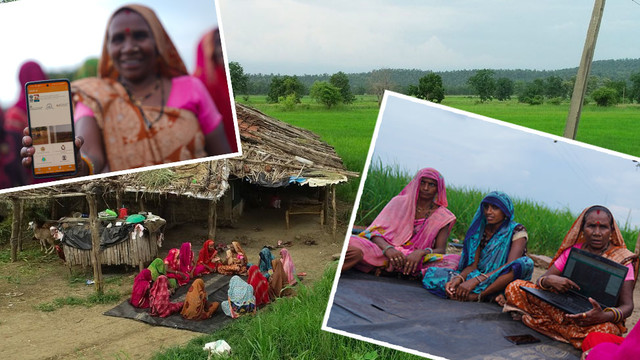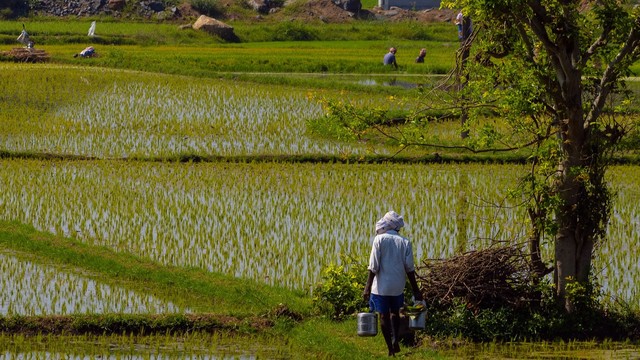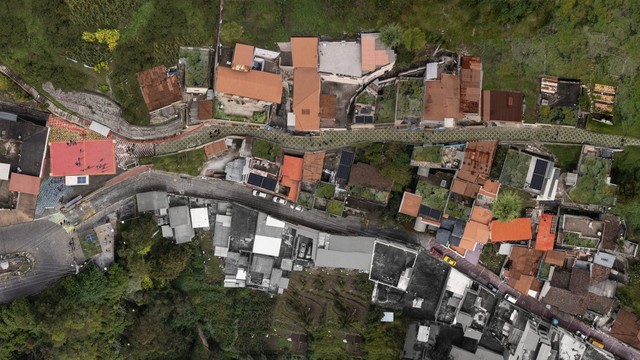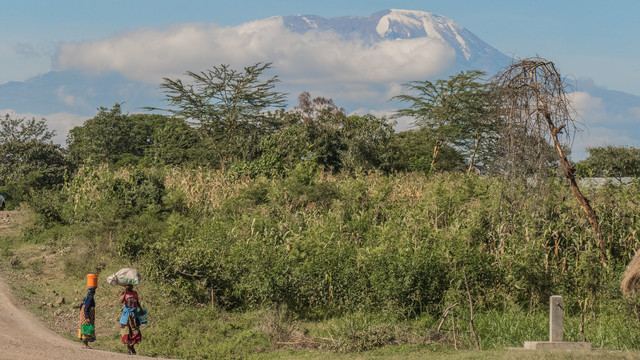Assessing adaptation and development progress
Countries need to know whether their efforts to adapt to climate change are working. The first in a new series of webinars discussed approaches that can help governments assess their progress.



A washed-out road in eastern Uganda. One of the webinar presentations looked at how Uganda is integrating climate change into national development M&E systems (Photo: James Anderson, Creative Commons via Flickr)
Climate risks are escalating, and governments and donors need effective adaptation programmes to keep sustainable development on track. Investing in robust monitoring, evaluation and learning (MEL) mechanisms to assess adaptation actions could support national planning and help meet reporting requirements in the Paris Agreement and the Sustainable Development Goals (SDGs) targets.
Last week, IIED and partner GIZ hosted the first in a series of webinars on MEL approaches for adaptation. The initiative is part of GIZ’s global Support project for the implementation of the Paris Agreement (SPA), run in collaboration with the German environment ministry.
The webinar set out what adaptation success looks like in practice and what governments need to measure to track adaptation progress.
Why do we need to invest in M&E for adaptation?
Our first presenter, Timo Leiter from GIZ’s climate policy team, outlined why it’s becoming ever more important to invest in M&E systems. He summarises his presentation below:
As climate risks derail development efforts, countries need to understand whether their adaptation actions are making a difference. To maximise effectiveness, they need to know which approaches work and why.
The following questions will help assess whether we’re getting better at adapting:
- Is climate vulnerability changing over time and which aspects of vulnerability are changing?
- How effective is the action we’re taking to adapt?
- What are the most urgent adaptation issues we need to address?
- Are climate policies, designed to support adaptation, having the desired effect?
MEL helps us answer these questions – supporting government and donors to monitor implementation, understand results and helping with planning and decision making.
However, assessing adaptation presents challenges including the length of time it can take to determine adaptation outcomes, the need for clarity on the context of adaptation actions and on how adaptation efforts are linked to sustainable development. These are some examples of why evaluators tend to concentrate too heavily on output-focused monitoring and overlook outcome-oriented evaluation.
Adaptation progress can be monitored at several levels (from local and project to national and global levels) and the Paris Agreement includes several mechanisms for reviewing and reporting on adaptation. Other international agreements such as the SDGs and the Sendai Framework for Disaster Risk Reduction also require progress monitoring which offers potential for synergies (PDF). In addition, countries are starting to invest in more robust national MEL systems which speak to these different frameworks – improving national decision making.
What should we measure when assessing adaptation progress?
Our second presenter, IIED’s Simon Anderson, set out a holistic approach to adaptation MEL that can lead to better results. This covered:
- Institutional capacity: how well are institutions and governments managing climate risks?
- Resilience/vulnerability/adaptive capacity: how are the actions of institutions and governments influencing the vulnerability, resilience and adaptive capacity of people and systems?
- Development progress: how are trends in vulnerability, resilience and adaptive capacity affecting longer-term development outcomes and wellbeing in the context of evolving climate hazards?
- Climate stresses: extremes, long-term trends and other climate-related phenomena that have the potential to affect development outcomes.
Anderson emphasised how this approach can help governments decide adaptation actions to keep sustainable development on track. To avoid having layer upon layer of system, governments can streamline the development evaluation process by integrating adaptation MEL systems with sustainable development frameworks.
The case of Uganda: linking climate change MEL to development planning frameworks
Our third presenter was Tracy Kajumba, who is regional senior climate change and development advisor at Irish Aid, Uganda. Her presentation showed participants how these concepts work on the ground, demonstrating the way Uganda has integrated climate change indicators into its national systems.
Uganda’s national climate change policy and its implementation strategy focus on using adaptation to reduce vulnerability. The country has made several attempts to develop M&E frameworks that assess these adaptation actions – but these efforts remain fragmented and poorly resourced.
The government has therefore included climate indicators in its key national frameworks and reporting systems, including:
- The Output Budget tool from the Ministry of Finance, supporting selected climate indicators for funding and reporting
- A scorecard from the Prime Minister’s office reports on the performance of output indicators by sector against budget provisions, improving outcome and climate-relevant indicators, and
- The performance assessment tool from the Ministry of Local Government assesses the performance of local governments across different sectors and reports on effectiveness and funding at local level.
The examples from Uganda offered practical ways to embed adaptation M&E within development planning.
Rich and engaging discussion followed the webinar with a number of participants highlighting the importance of MEL systems for achieving the goals of the Paris Agreement, and how such systems can support national decision-making for both adaptation and development.
The video playlist below features the webinar introduction, three presentations and the concluding question-and-answer session:
Forthcoming webinars
Having covered the basics in our introductory webinar, the next sessions will drill down into more specific issues, seeking to unpack the practicalities of implementing monitoring evaluation for adaptation and development. Join us for these upcoming webinars!
- January 2019: How can global funds build on national MEL systems to assess adaptation progress?
- March 2019: Integrated M&E systems – supporting national monitoring & evaluation systems and streamlining M&E to enable adaptation reporting and assessing SDGs progress.




